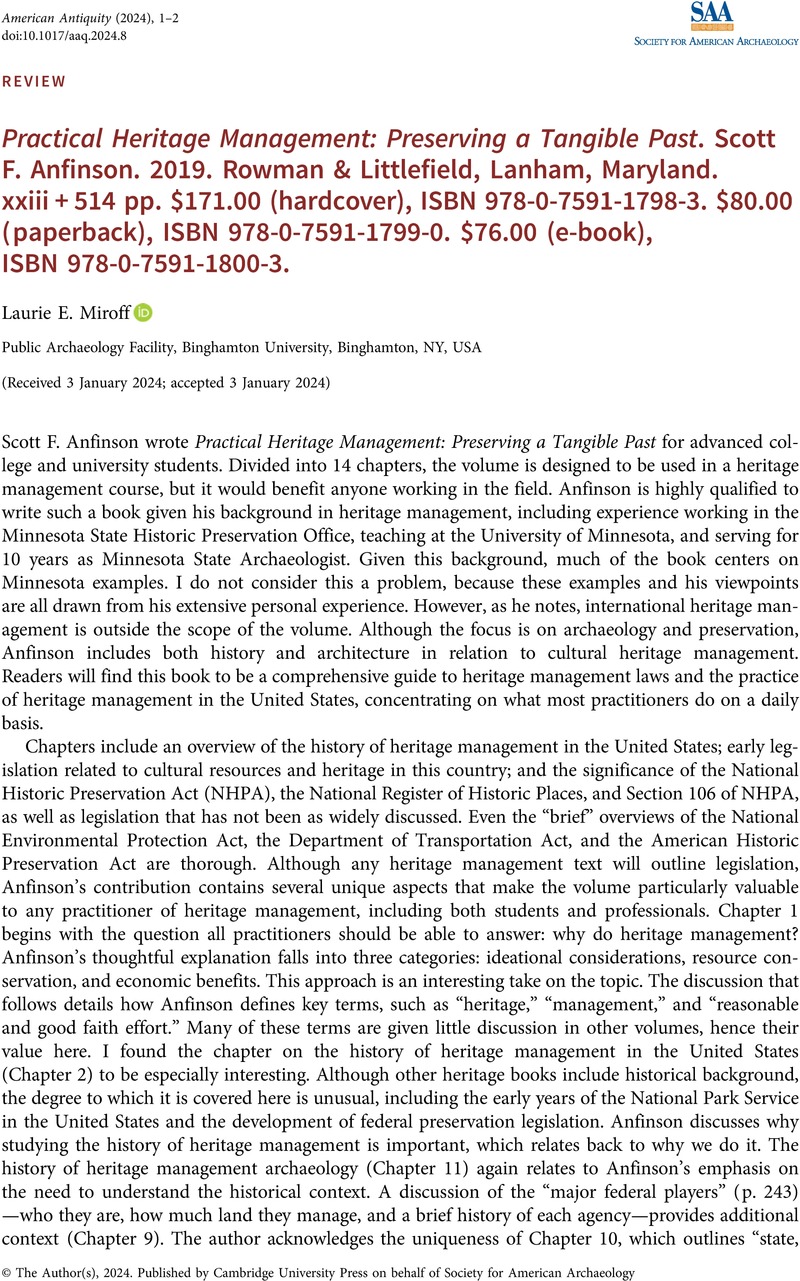No CrossRef data available.
Article contents
Practical Heritage Management: Preserving a Tangible Past. Scott F. Anfinson. 2019. Rowman & Littlefield, Lanham, Maryland. xxiii + 514 pp. $171.00 (hardcover), ISBN 978-0-7591-1798-3. $80.00 (paperback), ISBN 978-0-7591-1799-0. $76.00 (e-book), ISBN 978-0-7591-1800-3.
Review products
Practical Heritage Management: Preserving a Tangible Past. Scott F. Anfinson. 2019. Rowman & Littlefield, Lanham, Maryland. xxiii + 514 pp. $171.00 (hardcover), ISBN 978-0-7591-1798-3. $80.00 (paperback), ISBN 978-0-7591-1799-0. $76.00 (e-book), ISBN 978-0-7591-1800-3.
Published online by Cambridge University Press: 25 March 2024
Abstract
An abstract is not available for this content so a preview has been provided. Please use the Get access link above for information on how to access this content.

- Type
- Review
- Information
- Copyright
- Copyright © The Author(s), 2024. Published by Cambridge University Press on behalf of Society for American Archaeology


